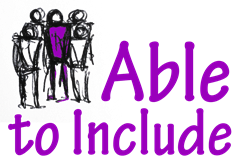Description
Reading comprehension is a key skill in almost all types of tasks related to the information society or labour inclusion. The question of whether a text is easy to read and understand depends very much on the abilities and experience of the reader. There exists some measures that can be applied to quantify legibility of a text (number of syllables per phrase, number of words per phrase, Flesch-Szigriszt index, etc) but the ability of the final reader is what ensures the transmission of information. It is possible, considering the profile of the IDD readers, to write a text that will suit the abilities of most people with literacy and comprehension problems.
Manual simplification of texts is possible, but is expensive and time consuming. This is not a suitable approach for the treatment of real-time user generated content. This kind of content cannot wait until a process of manual simplification is carried out on it. This is why an automatic simplification of real-time user generated content becomes necessary if we want people with language comprehension problems accessing this content.
UPF has developed a text-simplification technology called Simplext. This system is able to:
- Implement an adaptable and personalised text simplification system that can simplify documents, web pages and web 2.0 content-based on the Simplext methodology.
- Provide built-in easy-reading accessibility and auto-personalization mechanisms in any kind of text (PDF, .doc. html) in the computer, tablet or smart phone (web pages, social networks such as Facebook and apps).
- Integrate and deploy the simplification algorithms as a ubiquitous assistive technology, which “follows” the user in any web social application and from any user device.
Simplext has created a set of language resources and natural language processing tools in Spanish for the development of an automated simplification system.
Users of the Able to Include services, including Simplext, should note they are covered by the following FRAND policy adopted by their Service Providers, which in the case of Simplext is UPF.
Third-party beneficiaries of the Able to Include FRAND policy, are entitled to expect that each Able to Include Service:
- Is provided and used only on an “As Is” basis, without warranties or conditions of any kind, either express or implied, unless required by applicable law or agreed to in writing.
- Will continue to be thus provided for at least 2 years after the Able to Include project ends.
- Is provided on a fair, reasonable and non-discriminatory basis to all users who wish to use it.
- The service is available free for Partners’ research, training and private use.
- Commercial and external research users’ fees for use of the service will be based on rates that:
- Provide the Service Provider with an adequate incentive to be able to continue investing and contributing to the service in future time periods.
- Are based on a common approach,
- Are not anti-competitive and are reasonable even if no other alternative similar service exists.
- Documentation, support and communications with the Service Provider is through http://Able to Include.com only.
The Simplext service is described in D3.2 “Report on the integration of Simplext in the Accessibility Layer” at Public Documents.
Demo
Try out our Simplext service here.

